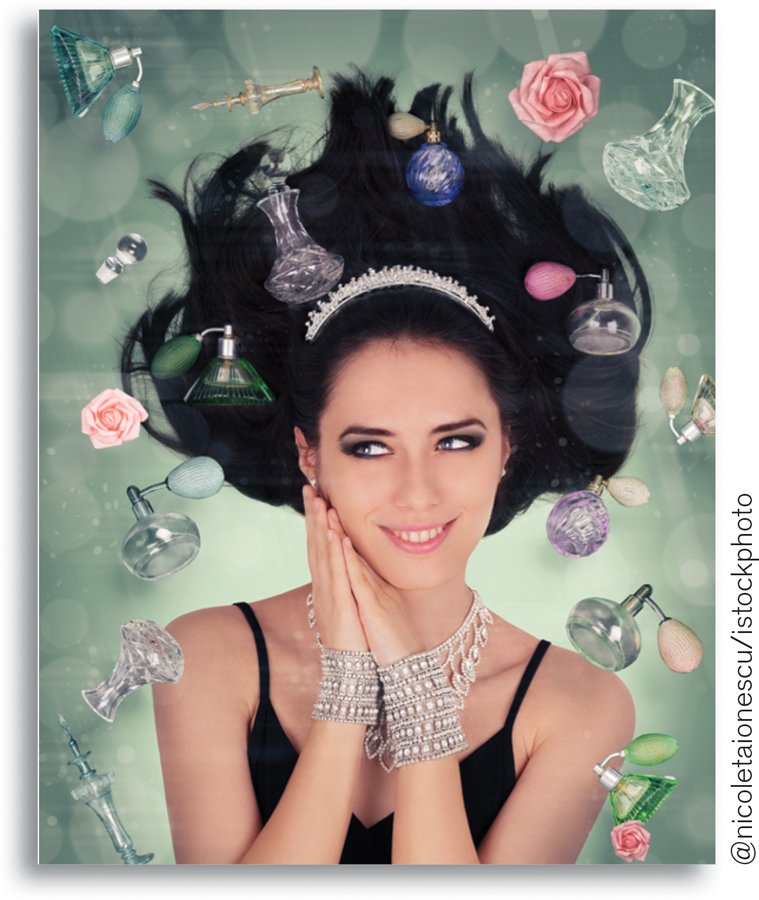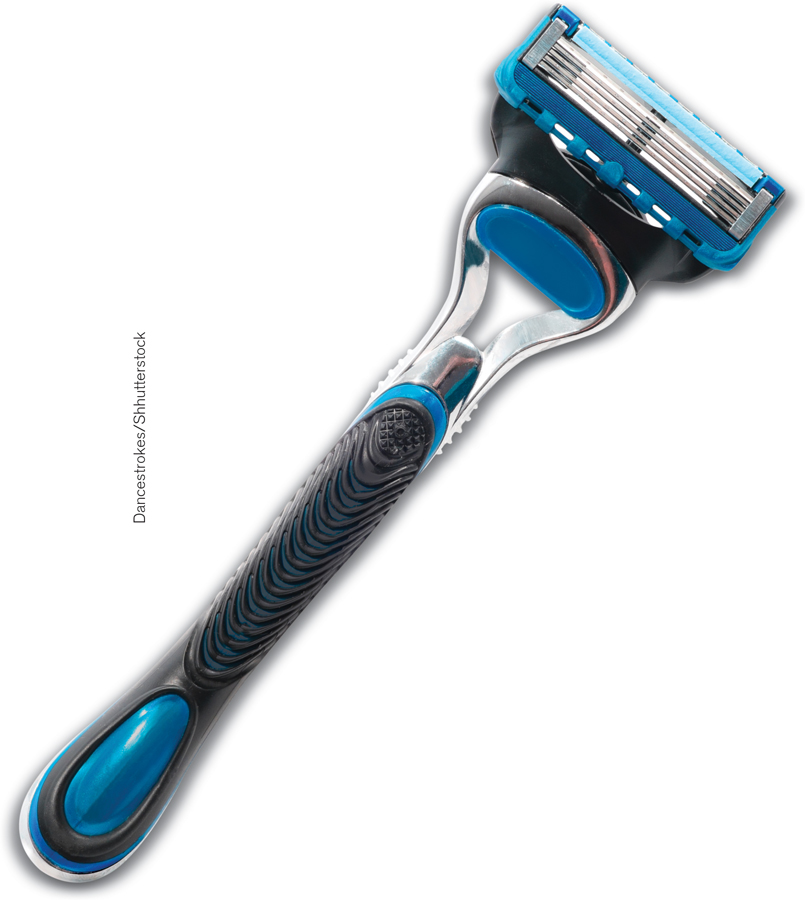Brand Names
You’ve been driving all day, and you decide that it’s time to find a place to sleep. On your right, you see a sign for the Bates Motel; on your left, you see a sign for a Motel 6, or a Best Western, or some other national chain. Which one do you choose?
Unless they were familiar with the area, most people would head for the chain. In fact, most motels in the United States are members of major chains; the same is true of most fast-
A brand name is a name owned by a particular firm that distinguishes its products from those of other firms.
Motel chains and fast-
In fact, companies often go to considerable lengths to defend their brand names, suing anyone else who uses them without permission. You may talk about blowing your nose on a kleenex or xeroxing a document, but unless the product in question comes from Kleenex or Xerox, legally the seller must describe it as a facial tissue or a photocopier.
As with advertising, with which they are closely linked, the social usefulness of brand names is a source of dispute. Does the preference of consumers for known brands reflect consumer irrationality? Or do brand names convey real information? That is, do brand names create unnecessary market power, or do they serve a real purpose?
As in the case of advertising, the answer is probably some of both. On one side, brand names often do create unjustified market power. Many consumers will pay more for brand-
On the other side, for many products the brand name does convey information. A traveler arriving in a strange town can be sure of what awaits in a Holiday Inn or a McDonald’s; a tired and hungry traveler may find this preferable to trying an independent hotel or restaurant that might be better—
In addition, brand names offer some assurance that the seller is engaged in repeated interaction with its customers and so has a reputation to protect. If a traveler eats a bad meal at a restaurant in a tourist trap and vows never to eat there again, the restaurant owner may not care, since the chance is small that the traveler will be in the same area again in the future. But if that traveler eats a bad meal at McDonald’s and vows never to eat at a McDonald’s again, that matters to the company. This gives McDonald’s an incentive to provide consistent quality, thereby assuring travelers that quality controls are in place.
ECONOMICS in Action: The Perfume Industry: Leading Consumers by the Nose
The Perfume Industry: Leading Consumers by the Nose
The perfume industry has remarkably few barriers to entry: to make a fragrance, it is easy to purchase ingredients, mix them, and bottle the result. Even if you don’t think you have a very good “nose,” consultants are readily available to help you create something special (or even copy someone else’s fragrance). So how is it possible that a successful perfume can generate a profit rate of almost 100%? Why don’t rivals enter and compete away those profits?

A clue to the answer is that the most successful perfumes these days are heavily promoted by celebrities. Beyoncé, Britney Spears, Christina Aguilera, and Katy Perry all have perfumes that are marketed by them. Jennifer Lopez has eight! In fact, the cost of producing what is in the bottle is minuscule compared to the total cost of selling a successful perfume—
The extravagant bottles that modern perfumes come in—
As one celebrated “nose,” Roja Dora, commented, “Studies show that people will say that a particular perfume is one of their favorites, but in a blind test they hate it. The trouble is that most people buy scent for their ego, after seeing an image in an advert and wanting to identify themselves in a certain way.”
So here’s a metaphysical question: even if perfume buyers really hate a fragrance in a blind test, but advertising convinces them that it smells wonderful, who are we to say that they are wrong to buy it? Isn’t the attractiveness of a scent in the mind of the beholder?
Quick Review
In industries with product differentiation, firms advertise in order to increase the demand for their products.
Advertising is not a waste of resources when it gives consumers useful information about products.
Advertising that simply touts a product is harder to explain. Either consumers are irrational, or expensive advertising communicates that the firm’s products are of high quality.
Some firms create brand As with advertising, the economic value of brand names can be ambiguous. They convey real information when they assure consumers of the quality of a product.
15-4
Question 15.6
In which of the following cases is advertising likely to be economically useful? Economically wasteful? Explain your answer.
Advertisements on the benefits of aspirin
Advertisements for Bayer aspirin
Advertisements on the benefits of drinking orange juice
Advertisements for Tropicana orange juice
Advertisements that state how long a plumber or an electrician has been in business
Question 15.7
Some industry analysts have stated that a successful brand name is like a barrier to entry. Explain the reasoning behind this statement.
Solutions appear at back of book.
Gillette versus Schick: A Case of Razor Burn?
In early 2010, Schick introduced the Hydro system, its latest and most advanced razor, two months before Gillette introduced a new upgrade to its Fusion Pro-
Schick and Gillette clearly hoped that the sophistication and features of their new shavers would appeal to customers. Hydro came with a lubricating gel dispenser and blade guards for smoother shaving, and a five-

This was not the first instance of a competitive razor launch. Back in 2003, Gillette and Schick went head-
Gillette is by far the larger company of the two, capturing 70% of the U.S. razor market in 2013. Although Schick has only about 12% of the market, many analysts believe it is the leader in innovation. According to William Peoriello, an analyst at investment bank Morgan Stanley, “the roster of new razors from Schick is forcing Gillette to change the pace of its new product launches and appears likely to give Gillette its strongest competition ever.”
Many customers, though, have become exasperated with both companies’ offerings. In 2012 a small startup, the Dollar Shave Club (DSC), challenged the two giants by producing a video—
While Gillette and Schick publicly claimed they were not worried, others are not so sure that they shouldn’t be. As one Wall Street market analyst said, “There’s clearly almost a backlash among shavers, among razor users, about the price of a man’s razor.”
QUESTIONS FOR THOUGHT
Question 15.8
What explains the complexity of today’s razors and the pace of innovation in their features?
What explains the complexity of today’s razors and the pace of innovation in their features?Question 15.9
Why is the razor business so profitable? What explains the size of the advertising budgets of Schick and Gillette?
Why is the razor business so profitable? What explains the size of the advertising budgets of Schick and Gillette?Question 15.10
What explains the popularity of the Dollar Shave Club? What dilemma do Schick and Gillette face in their decisions about whether to maintain their older, simpler razor models? What does this indicate about the welfare value of the innovation in razors?
What explains the popularity of the Dollar Shave Club? What dilemma do Schick and Gillette face in their decisions about whether to maintain their older, simpler razor models? What does this indicate about the welfare value of the innovation in razors?